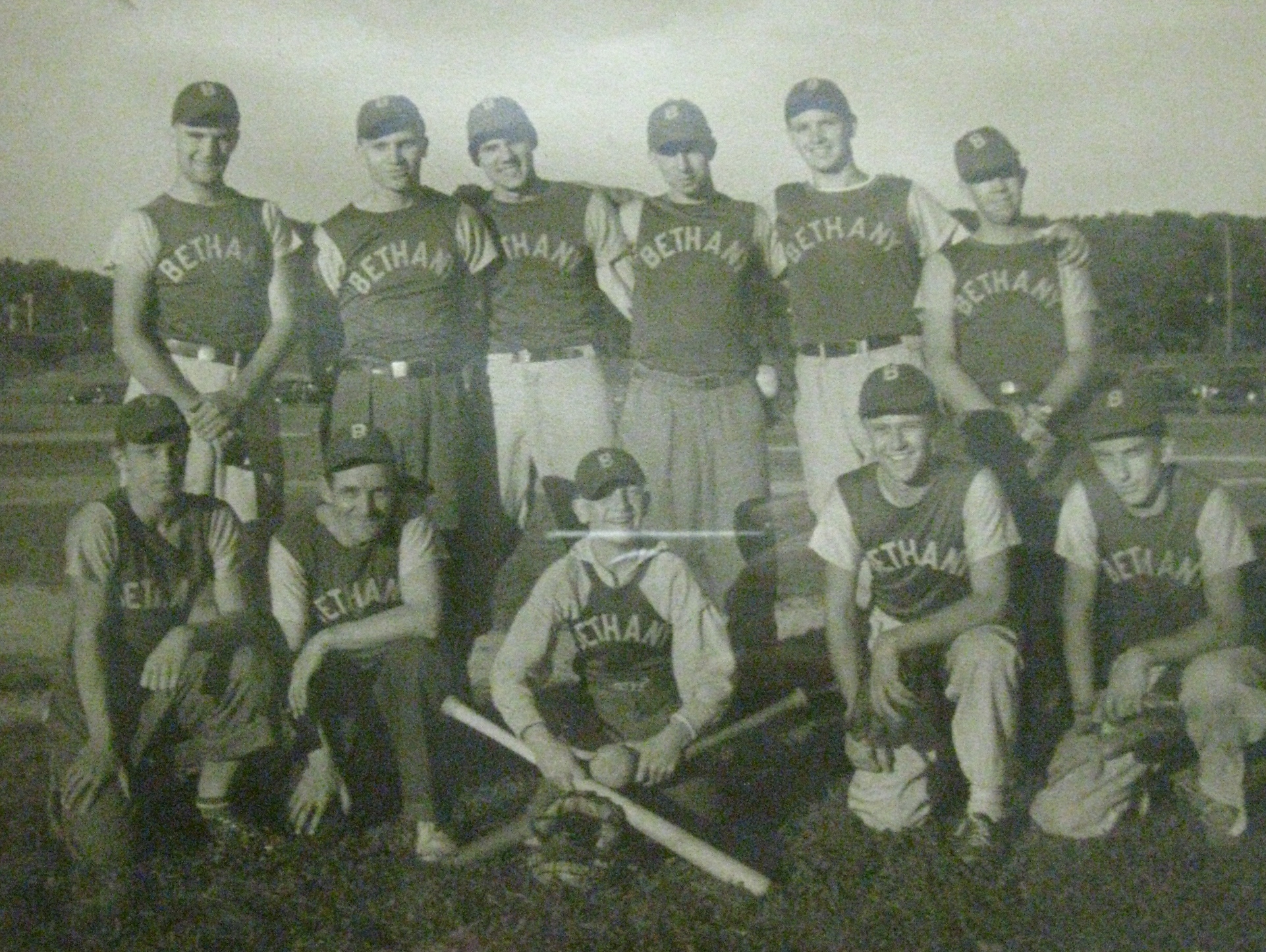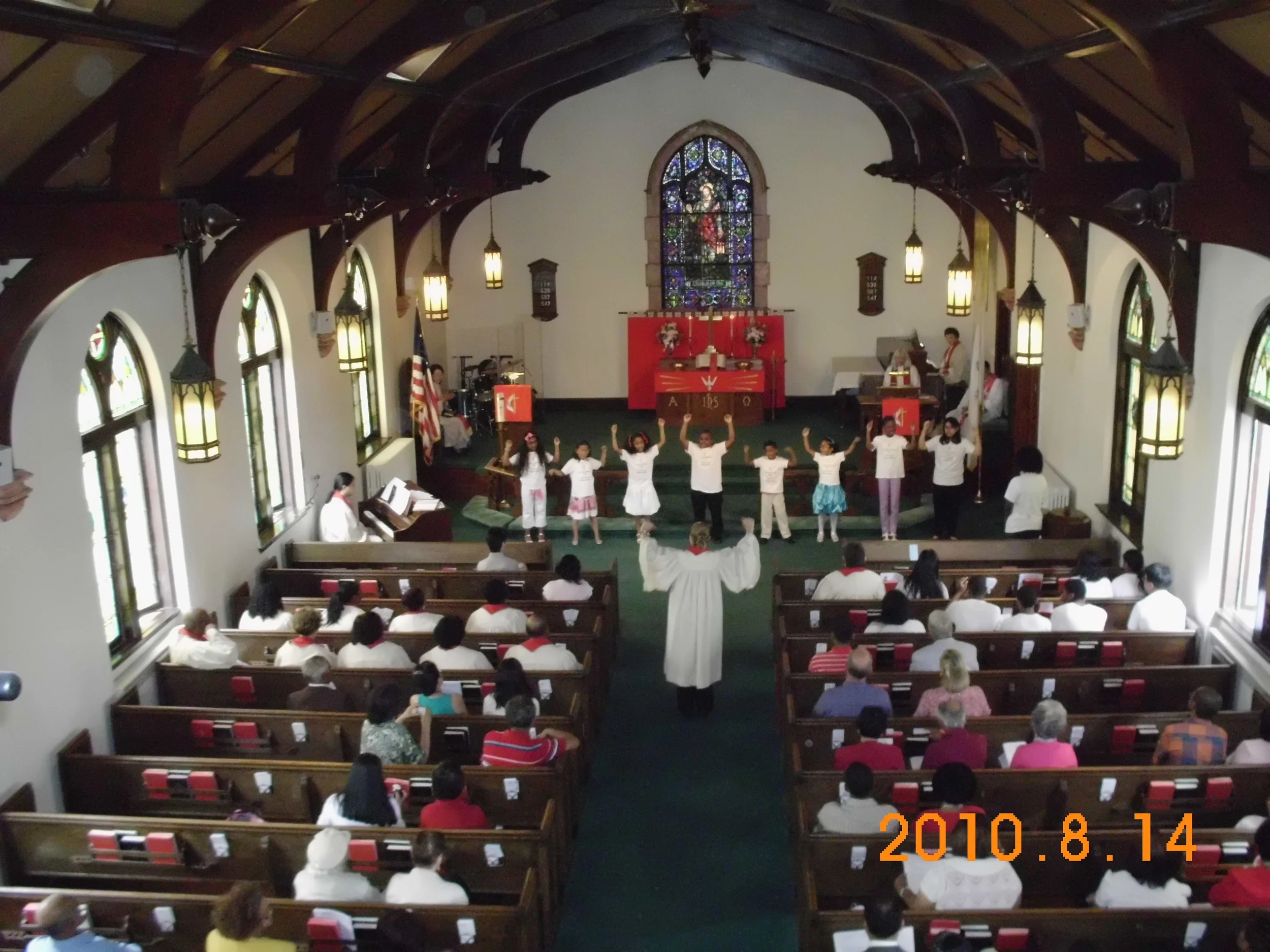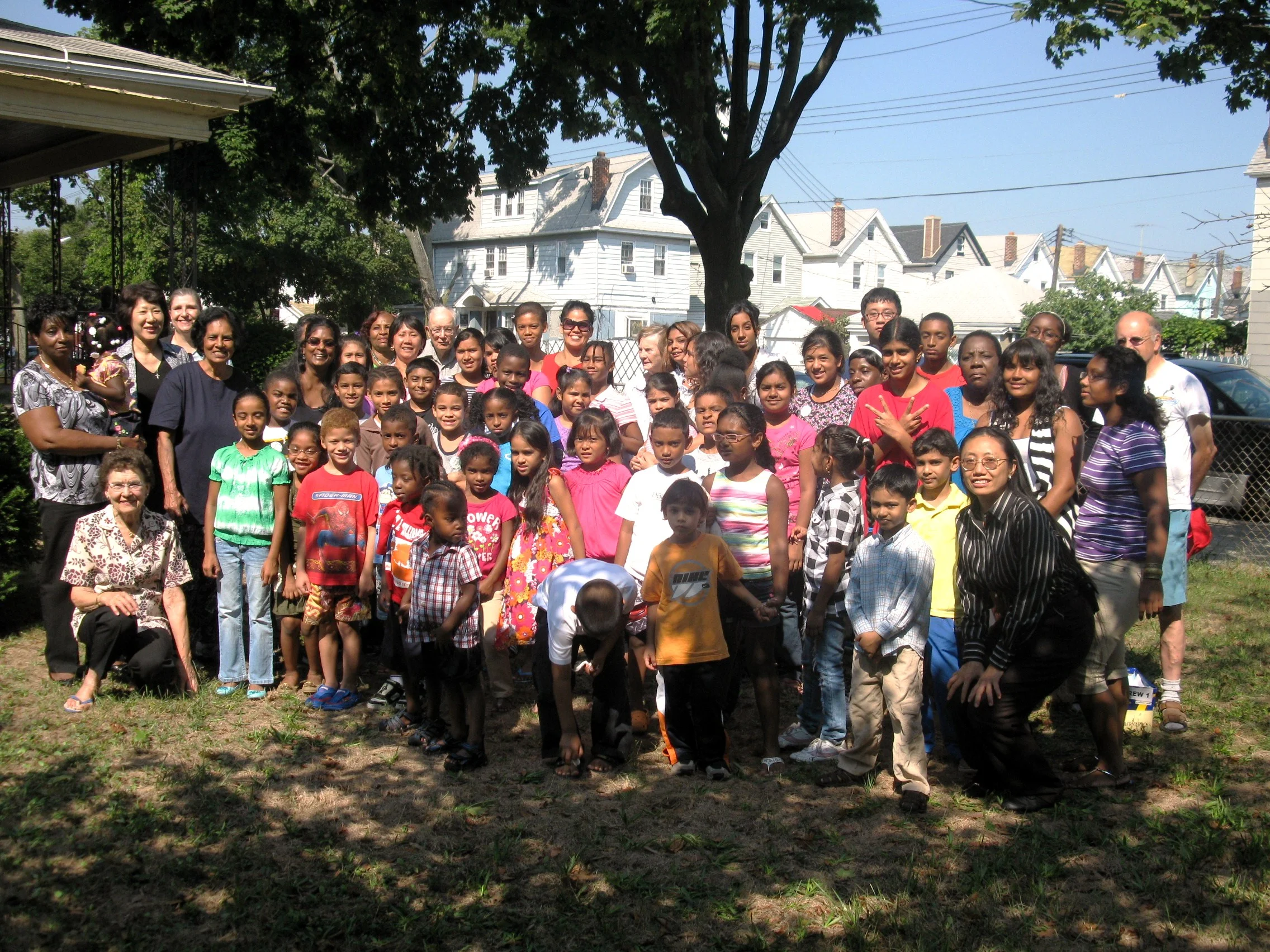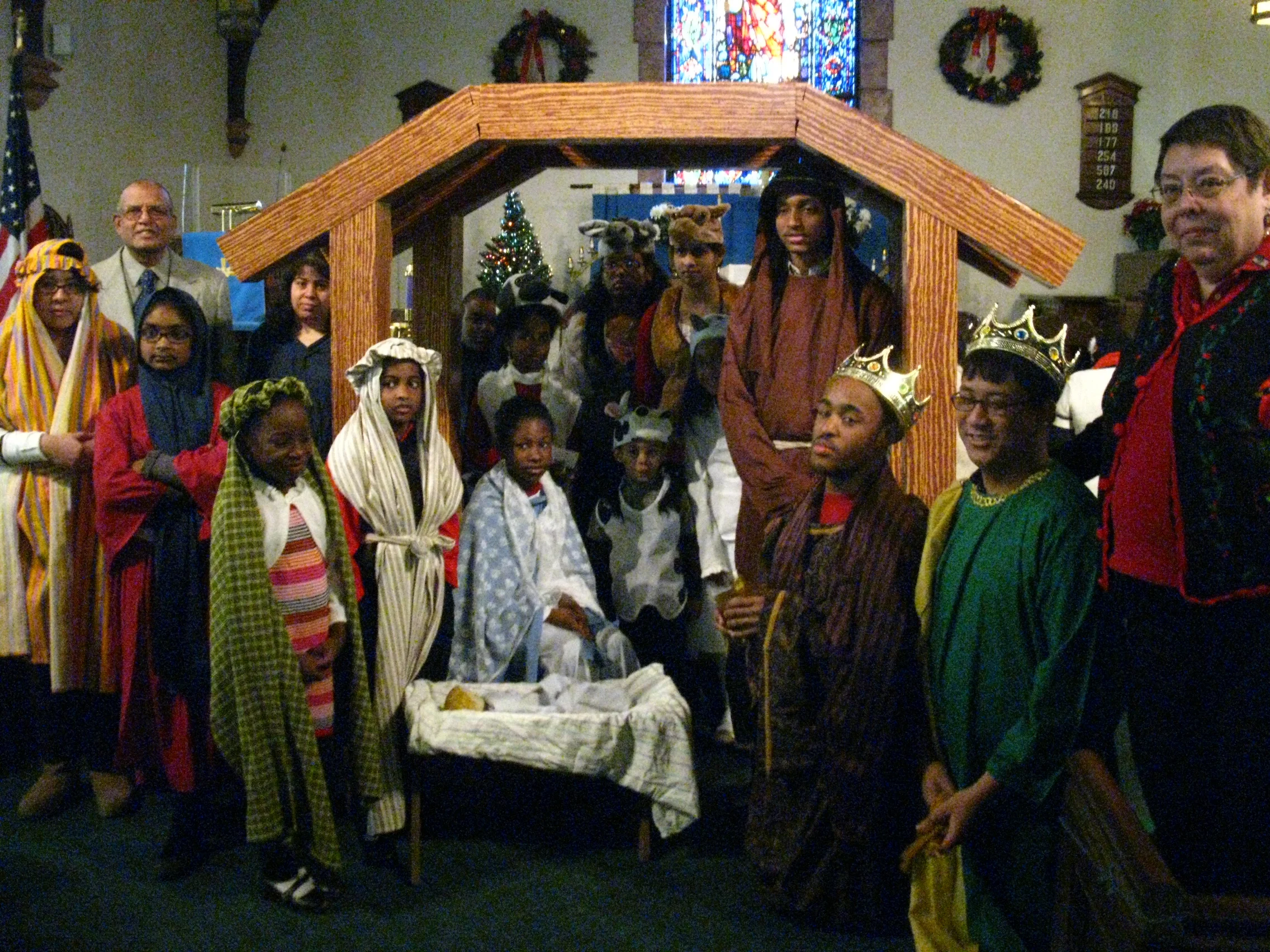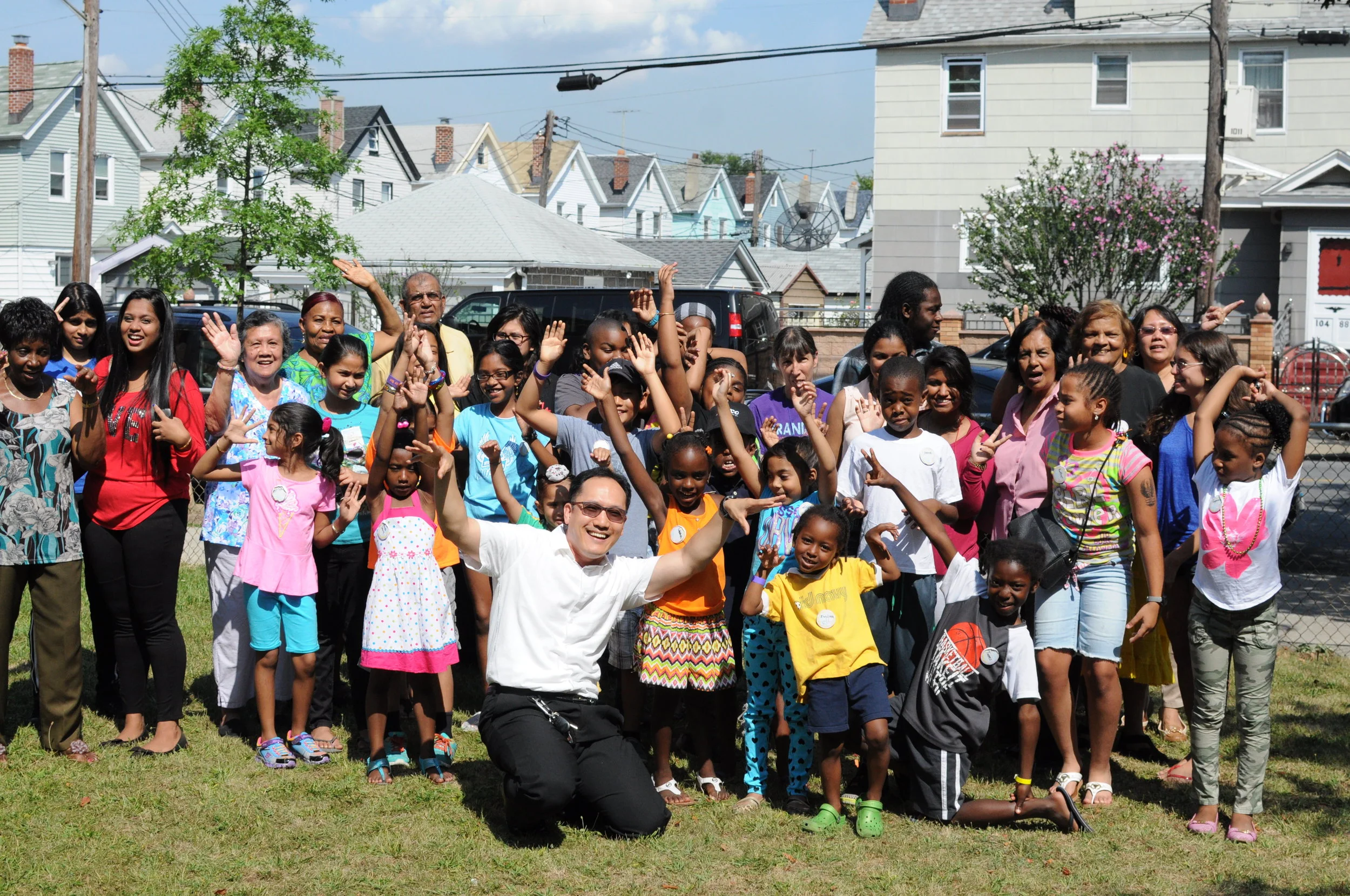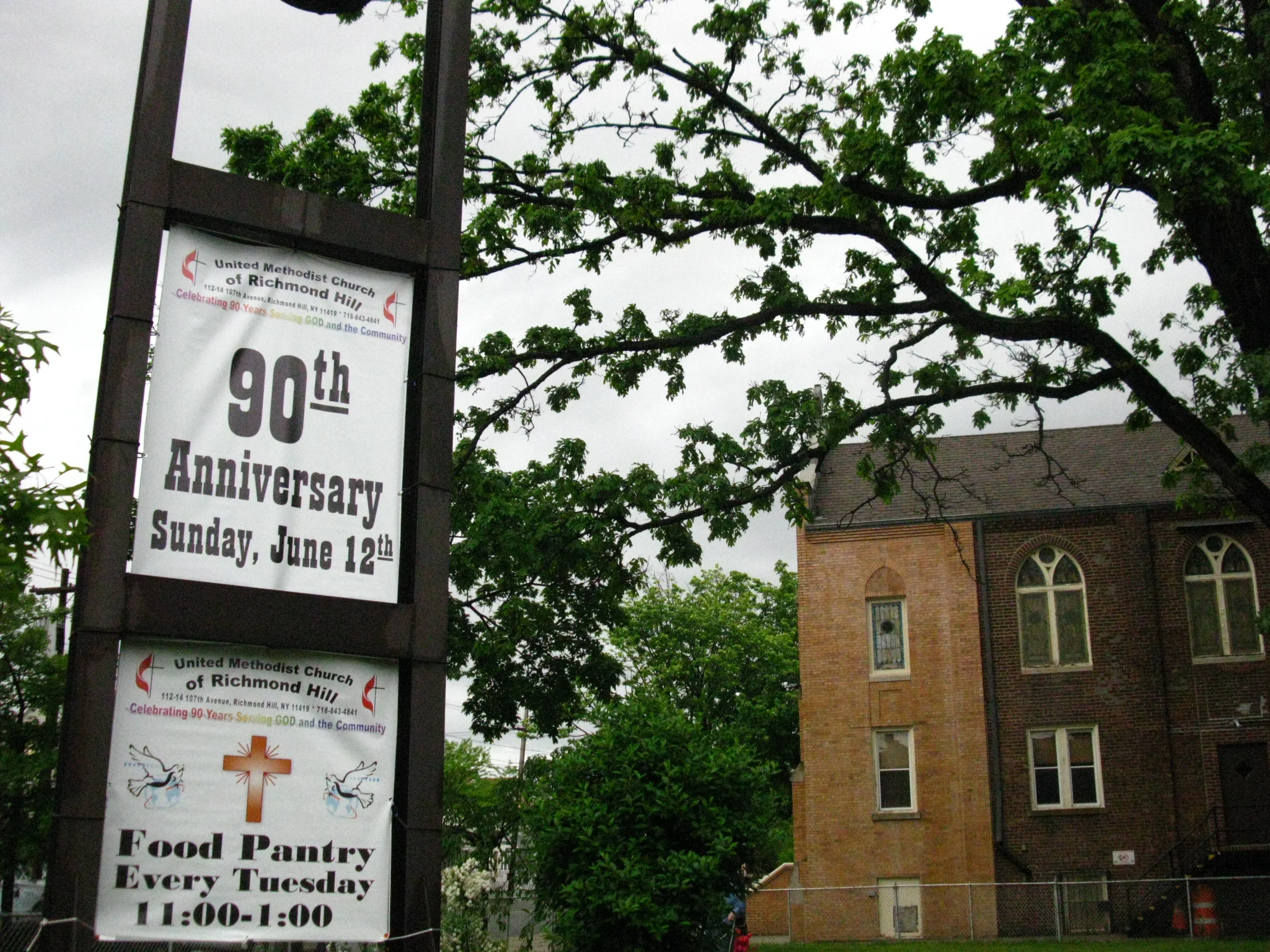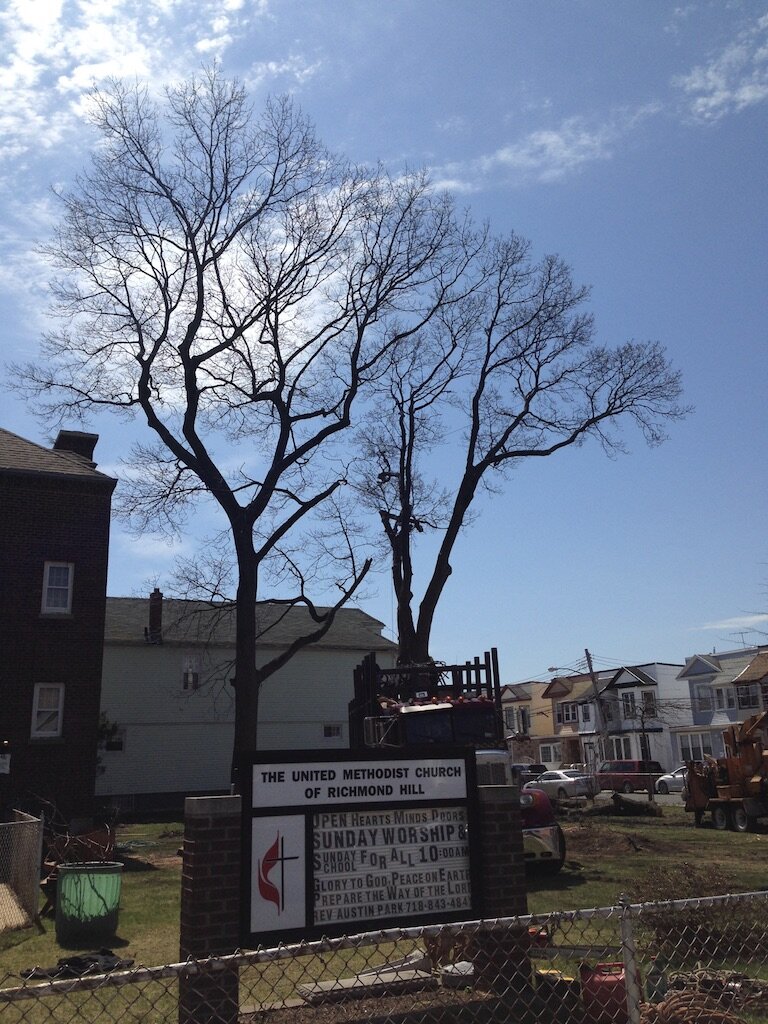HISTORY
HISTORICAL PHOTOS
TIME LINE
May 1919
Bethany Church was “born” at the 44th session of the Atlantic Conference of the Evangelical Church Rev. William Schmid appointed as missionary.
July 24th,1919
Using a gift from the Harrison Avenue German Evangelical Church, which was closing, a store and dwelling-house at 109th Street and Atlantic Avenue was purchased to be used as a mission hall and parsonage.
October 5th, 1919
The first service, under the name of Harrison Evangelical Church, was conducted in the store by Rev. Schmid.
October 21st, 1920
During the pastorate of Rev. Fred G. Fisher, the Church was organized and incorporated as Bethany Evangelical Church.
1921
The 1921 session of the Atlantic Conference authorized the purchase of the present property, on 107th Avenue, extending from 112th Street to 113th Street.
June 12th, 1921
The first service on this property was held in a tent provided by the New York City Evangelistic Committee. These continued during the building of the new church.
September 14th , 1921
During the pastorate of Rev. H. Hagelstein(1921-1924), ground was broken for the construction of the chapel and parsonage.
October 10th , 1921
The cornerstone is laid (It is to the right of the church entrance).
January 15th, 1922
The new church was dedicated by Bishop S.C. Breyfogel
May, 1924
Rev. Frederick W. Siebert appointed pastor of Bethany Church.
January, 1925
The chapel was remodeled and enlarged by adding the two back rooms. The membership of the church grew and the Sunday School found it necessary to meet in morning and afternoon sessions.
1930
It was decided to enlarge the church to its present size by adding another floor, raising the sanctuary to the second floor, and adding the extension at the rear.
December, 1930
The new cornerstone was laid (It is located to the right of the church office door).
June 14th , 1931
The reconstructed church was dedicated by Bishop C. H. Stauffacher.
May, 1932
Rev. Henry Heine appointed as Pastor. During the difficult days of the depression, the church made a steady and solid growth in all departments. By 1937, the membership of the church had reached 280.
April 1937
Rev. Wilbert H. Wolf succeeds Rev. Heine. Under his energetic leadership during the next two years the work of the church was given renewed impetus, particularly among the young people through the “University of Life” program.
September, 1939
Rev. Joseph Wolf appointed. The clouds of war (WW II) gathered and the storm broke. The names of 120 men and women called to service were placed on the Honor Roll of the church. Despite the restrictions imposed by the war, the church enlarged its ministry and work. Active membership increased to 365 and $22,000 of the church’s indebtedness was paid off.
1939-1952
“The Great Debt Reduction” Starting with a debt of $61,995.
1939
“Cent-a- Meal” boxes and Debt-Reduction envelopes are introduced.
1940
Twentieth Anniversary Enlistment Crusade initiated, with $20 gifts by each person enlisted.
1941
Weekly Message envelopes used to emphasize the spiritual values in giving. Five percent of the regular offerings continued to go towards debt reduction.
1942
The slogan for the year was “ADVANCE!”
1944
In the fall the first major drive was launched, the Twenty-Fifth Anniversary Debt Reduction Campaign. To meet a goal of $5,000, each member was asked to pay $25 for the Campaign in addition to their regular offerings. Approximately $7,000 was raised and …
1945
Notes of $7,260 were burned at the Anniversary and “Church Bonds” were given to those who participated in the Campaign.
1946
“For a Beautiful Bethany” was the slogan for the 1946 debt and renovation campaign.
1947
“Complete the Picture of Bethany” included a giant picture of the church cut into small sections, like a jig-saw puzzle. Each piece was returned with a special contribution.
1948
“Vote for Bethany” was a slogan and program that was picked up and used in churches around the nation.
1949
“You Can Count on Me” was the slogan as they prepared for the second half of the twentieth century.
1950
The “Mid-Century Fund” was enhanced with “Talent Dollars” that were returned with other dollars on Talent Sunday.
1951
The “Mortgage-Burning Fund” was started. Contributions were “firewood” towards the goal of burning the mortgage.
1952
The campaigns and drives and regular Debt-Reduction offerings reduced the debt by $53,795, and a loan of $9,000 from the National Board of Church Extension, made possible the cancellation of the mortgage and the refinancing of the remaining indebtedness into five promissory notes.
October, 1952
Pastor Wolf presided at the Mortgage Burning Service at the 32nd Anniversary of the incorporation of Bethany Church.
In the meantime … Post-World War II Changes
1942
The women’s Missionary Society sent $200 for China relief, on top of regular offerings.
1945
Bethany’s baseball team was coached by David Koyler.
1946
The Evangelical Church joined with the United Brethren in Christ, forming the Evangelical United Brethren Church. Ours became the Bethany Evangelical United Brethren Church.
1946
1,562 items of clothing were sent over-seas for post-war European Relief programs.
1946-1947
Assistant Minister Rev. Ward L. Kaiser directed the youth program. The Father-Son Communion Breakfast was resumed and the Dorcas League hosted a Laymen’s Breakfast.
1947
A total of 750 lbs. of food and clothing were shipped abroad. At the Children’s Day Program boys and girls bought twelve “Friendship Packs” for European Relief.
1952
Under Pastor Wolf’s thirteen years of ministry 511 new members were added to the rolls.
May, 1952
Rev. Virgil G. Megill, Jr. was appointed Pastor of Bethany Church.
1952-1954
The Bethany Basketball Team won the Atlantic Conference Trophy for all three years.
1953-1954
The Christian Service Guild sent packages of clothing to Korea.
1955
Two years ahead of schedule, with the payment of the five $1,800 promissory notes, the church was finally debt free. An improvement program was instituted, including waterproofing of the church building, a new ceiling and lighting in fellowship hall, fencing the church property, painting of the church rooms, and a new front sidewalk.
1958-1971
Rev. Charles F. Brown, Pastor
1960
“40th Anniversary Advance”. As part of our Fortieth Anniversary, Bethany Church has had a $20,000 Program of reconditioning and redecorating of the church interior.
1960’s
At some point the congregation collected “Green-Stamps” and got enough to purchase the piano which is still in use in the sanctuary.
1964
Our membership peaks at 578.
1968
The denominations of the Methodist Church and the Evangelical United Brethren Church merged, forming the United Methodist Church.
1969
Ours became the Bethany United Methodist Church upon being transferred from the Eastern Conference of the United Brethren Church to the New York Conference of the United Methodist Church. Our membership is 408.
June 1st, 1971
The First United Methodist Church of Richmond Hill joined with the Bethany United Methodist Church; the new name is our current one, The United Methodist Church of Richmond Hill.
1971-1979
Rev. Roger L. Bauer, Pastor
June 1st, 1975
Dedication of the Bell Tower.
1976
Pastor Bauer is yoked to Community UMC of Ozone Park.
1979-1982
Rev. Wesley Howard Allen, Pastor (Yoked to Community UMC of Ozone Park)
1982-1986
Rev. Jeffrey A. Fillian, Pastor (Yoked to Community UMC of Ozone Park)
1986-1995
Rev. Carolyn J. Strack, Pastor (Yoked to Community UMC of Ozone Park until 1992)
June 28th , 1992
With a glorious celebration of union, the merger of Community United Methodist Church with the United Methodist Church of Richmond Hill occurred; District Superintendent, Rev. Pedro Piron Participated.
1993
Living Word Ministries starts renting; the former Community Methodist Church building.
October 1st , 1994
Living Word Ministries starts leasing; this continues to the present.
1995
Rev. Dee Carol Stevens, Pastor, was appointed by Bishop.
2006
Rev. Moon Sook Kim, Pastor, was appointed by Bishop Jeremiah Park
2013
Rev. Austin Park, Pastor, was appointed by Bishop Martin M. Lee.
Rev. Austin Park organized the Young Adult Group and Richmond Hill Church Choir.
Rev. Austin Park started the church website.
2016
Rev. Austin Park removed the church garden except for the Bell Tower, and initiated the church parking lot. (The construction was finished and dedicated in 2017.)
Rev Park installed the church stair-lift chair from the basement to the 2nd floor sanctuary entrance.
2017
Rev. Austin Park built the fence to guard the parsonage.
Rev. Park started the 40 day Early morning prayer circle every Spiring, and Fall as an official church program.
Reverend Park started Easter/Thanksgiving Church Cantata as an official church program every year.
2020-present
Because of Covid-19, the church started to upload the whole service on Youtube.
United Methodist Church of Richmond Hill has started a Flu-Shot Drive for a community service.







